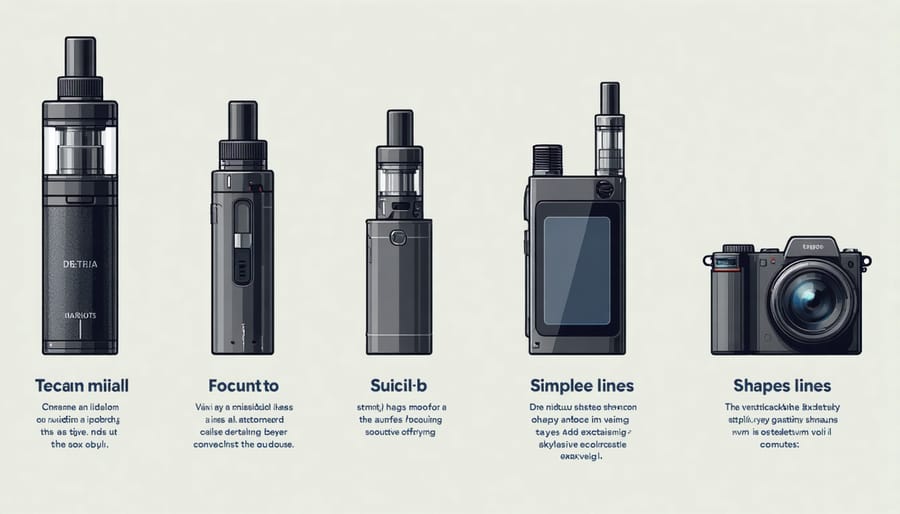Leverage vaping technology to transform healthcare by integrating smart inhaler systems that monitor patient medication adherence in real-time. Collaborate with leading innovators to design devices that deliver precise dosages for conditions like asthma and COPD. Drive research into vaporized delivery of vaccines and therapeutics, opening pathways for non-invasive treatments. Explore partnerships with eurovap terrebonne to foster community-centric health solutions.
The Intersection of Vaping and Health Innovation
The Rise of Vaping in Health Applications
In recent years, vaping technology has emerged as a significant player in the healthcare sector, offering promising avenues for innovation and collaboration. Originally developed as an alternative to traditional smoking, vaping devices have evolved beyond nicotine delivery into versatile tools for health applications. Researchers and entrepreneurs are exploring the potential of these devices to administer medications more effectively, manage chronic conditions, and support cessation programs.
The rise of vaping in health applications is largely due to its ability to deliver precise dosages, improve patient compliance, and reduce harmful side effects associated with other forms of medication delivery. For instance, vaping technology is being used in the delivery of aerosolized drugs for respiratory conditions such as asthma and COPD, providing faster relief and enhancing the patient experience. Beyond respiratory care, innovators are investigating the use of vaping devices to administer vaccines and pain management solutions, relying on its ability to bypass traditional metabolic pathways and offer immediate therapeutic effects.
This growth is not just a solo endeavor. Partnerships between tech companies, researchers, and healthcare professionals are driving innovation at an unprecedented pace, fostering an environment where collaborative initiatives are pushing the boundaries of what is possible. As the healthcare landscape continues to evolve, the integration of vaping technology in therapeutic solutions represents an inspiring frontier for those eager to contribute to meaningful health advancements.

Technological Advancements in Vaping
Recent technological advancements position vaping as a potential tool for health innovation, offering pathways to address complex health challenges. One remarkable development is the precision design of vaporizer devices that allow for customizable dosages of therapeutic compounds, such as nicotine substitutes. These devices utilize smart technology, enabling users to monitor and control intake via mobile apps, ensuring accurate dosing tailored to individual needs.
A noteworthy success story features the collaboration between tech start-ups and biomedical researchers, leading to innovations in vapor technology for administering vitamin supplements and other wellness adjuncts. This approach highlights the versatility of vaping technology beyond traditional uses, transforming it into a platform for broader health applications.
Furthermore, advancements in materials science have led to enhancements in coil technology, improving the efficiency and safety of these devices. This progression not only reduces the potential for harmful by-products but also elevates user experience, making vaping a more viable option in therapeutic settings.
Crucially, these developments in vaping technology emphasize collaboration between industries, fostering an ecosystem of innovation. As the global community continues to prioritize health, these pioneering efforts showcase how technology can merge with health initiatives, potentially revolutionizing patient care and wellness management. For more insights into emerging technologies, explore latest technological advancements.

Case Studies of Vaping Innovation
Pioneering Projects and Start-ups
In the dynamic landscape of health innovation, several pioneering projects and start-ups are harnessing vaping technology in groundbreaking ways. These innovators are not only addressing health challenges but also setting new benchmarks for the application of vaping technology beyond its traditional use. Among the prominent names is RespiTech, a Canadian start-up developing inhalable therapeutics using vaping devices to deliver medication directly to patients’ lungs. This targeted approach enhances drug efficacy and reduces systemic side effects, illustrating how agile technology can transform therapeutic delivery.
Another shining example is Wellness VaporTech, which has reimagined the potential of vaping devices by integrating them into stress management solutions. Their smart vaporizer synchronizes with biometric data to dispense aromatherapy blends, offering personalized relaxation regimens. This innovation underscores a trend towards holistic wellness solutions that blend cutting-edge technology with traditional health practices.
Internationally, projects like VapeAid are making waves by providing accessible smoking cessation aids. Through collaborative research and development, they have launched devices that simulate the sensation of smoking while delivering nicotine in decreasing amounts, thus aiding users in quitting smoking. Such initiatives demonstrate both the versatility of vaping technology and the spirit of innovation-driven progress.
These tech success stories illustrate the transformative potential of vaping technology in health innovation. As these start-ups continue to evolve, they offer inspiring examples of how collaborative approaches can lead to solutions that benefit individuals and society at large. The future of vaping technology in health points towards more personalized, efficient, and accessible healthcare solutions, driven by entrepreneurs and researchers committed to advancing human well-being.
Collaborative Initiatives
Vaping technology has emerged as a potent tool in health innovation through a series of collaborative initiatives that intertwine the expertise of tech companies, researchers, and healthcare providers. One notable example is the partnership between a leading vaping device manufacturer and a research institution focusing on respiratory health. This collaboration harnesses advanced sensor technology to develop vaping devices capable of monitoring lung function, providing real-time data for ongoing health assessments.
In another groundbreaking initiative, healthcare providers are working with technology firms to integrate vaping devices into smoking cessation programs. These efforts utilize smart algorithms to personalize nicotine delivery, thereby boosting the effectiveness of quitting strategies tailored to individual needs. This synergy between healthcare experts and technological innovators has not only improved patient outcomes but also expanded the spectrum of targeted therapies available to users.
Additionally, the convergence of artificial intelligence and vaping technology is being explored to facilitate in-depth research into respiratory diseases. Collaborative frameworks allow for the aggregation of anonymized data from users worldwide, helping researchers identify trends and predictive markers for early intervention. These examples underscore the transformational impact of collaborative initiatives in advancing vaping technology as a dynamic frontier in health innovation, inspiring further exploration and development in the healthcare landscape.

Challenges and Opportunities
Regulatory and Ethical Challenges
Navigating the regulatory and ethical landscape of vaping technology in health innovation requires careful consideration. As vaping devices gain traction in healthcare for purposes such as drug delivery or smoking cessation aids, regulatory bodies must ensure safety and efficacy standards are met. In Canada, devices face rigorous evaluation by Health Canada, demanding transparency and evidence of health benefits. Globally, harmonization of standards remains a challenge due to varying regulatory frameworks. Ethically, using vaping technology poses questions around long-term health effects and potential misuse, necessitating robust surveillance and public health guidelines. Patient consent and data privacy are paramount, especially with devices capable of collecting sensitive health data. Entrepreneurs and innovators must collaborate with regulators to foster a trust-based ecosystem that encourages innovation while protecting public interest. Addressing these challenges with proactive strategies can inspire transformative advancements in healthcare, showcasing a commitment to ethical innovation that benefits society at large.
Future Prospects and Potential Impact
Vaping technology has the potential to redefine health innovation, offering promising avenues for targeted therapeutic delivery systems. As digital marketing trends continue to evolve, the integration of vaping devices with health apps and personalized data analytics could usher in a new era of preventative care and chronic disease management. Entrepreneurs and innovators are increasingly collaborating to design vaping solutions tailored for medicinal purposes, such as efficient nicotine replacement therapies and the delivery of vitamins or pharmaceuticals. The adaptability of vaping technology enables more precise dosing, which could reduce side effects and improve patient outcomes. In the future, we may witness collaborations across startups, tech giants, and healthcare providers, driving innovation and transforming how we approach treatment and wellness on a global scale. With such advancements, vaping technology is poised to make a significant impact by enhancing accessibility to health care solutions and contributing to overall societal well-being.
Conclusion: Embracing a Healthier Future
The future of health technology is bright, and vaping technology’s potential to drive health innovation remains significant. As research continues to uncover its benefits in contexts like smoking cessation and localized drug delivery, we stand at the brink of transformative changes in personal healthcare. Entrepreneurs and innovators are encouraged to leverage these opportunities to explore and develop new applications, transforming concepts into practical solutions that improve lives globally. By prioritizing safety and utility, vaping technology can evolve beyond its traditional scope, potentially addressing complex health issues with refined precision and personalization.
To realize this potential, increased collaboration across industries is essential. Researchers, developers, and businesses must unite to overcome current challenges and push the boundaries of what’s possible, ensuring that breakthroughs are effectively integrated into healthcare systems. Continued investment in research will not only expand our understanding but also foster an environment where bold ideas can flourish. As we embrace this journey towards a healthier future, let us champion innovation, advocate for responsible use, and remain steadfast in our commitment to harness vaping technology for a significant, positive impact on global health outcomes.
